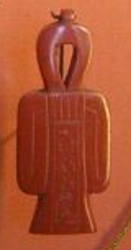

Red was a powerful colour because of its association with blood, in particular the protective power of the blood of Isis. The Tjet amulet (also known as the “Girdle Tie of Isis”) which was placed at the throat of the mummy was often made out of a red stone.

The Book of the Dead specifies that the Tjet should be made out of red jasper, but carnelian and red glass examples have also been found. The Tjet is not always red (examples in blue have also been found) but many scholars link the symbol with the blood of Isis and consider that it may represent a menstrual pad.
The Ancient Egyptians favoured the red stones jasper (“khenmet”, possibly from the verb hnm, “to delight”) and carnelian (“herset”, which meant “sadness” by the late dynastic period). They also used sard and glass to great effect, and made rich red paint from iron oxides and red ochres.
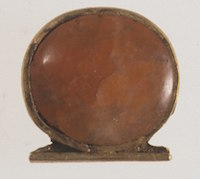
Red could represent life. In Egyptian art men were generally depicted with red skin, indicating their vitality and during celebrations people would paint their bodies with red ocre and wear carnelian. The Shen amulet, thought to ensure long life, was associated with the sun god Ra and featured a red stone, often carnelian (although it could also be a blue stone such as lapis).
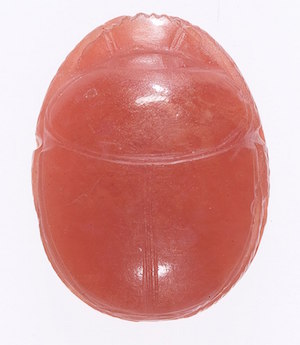
The mummies of the pharaohs were interred with a miniature heart amulet which represented the Ba and was placed in the heart cavity with the Scarab. It was made from a precious or semi-precious red stone and was thought to protect the heart. Small red heart amulets were also worn by those with a heart condition to enlist the god’s help against their infirmity.
The colour red could also represent anger, chaos and fire and was closely associated with Set, the unpredictable god of storms. Set had red hair, and people with red hair were thought to be connected to him.
As a result, the Egyptians described a person in a fit of rage as having a “red heart” or as being “red upon” the thing that made them angry. A person was described as having “red eyes” if they were angry or violent. “To redden” was to die and “making red” was a euphemism for killing.
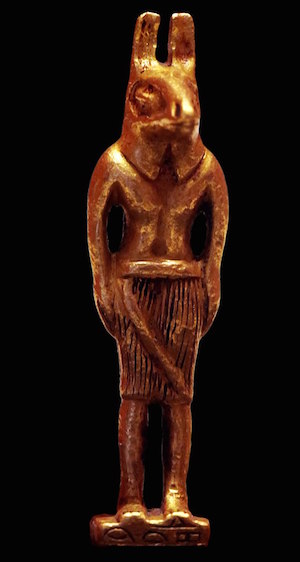

Set was associated with the desert and foreign places, and thus with chaos and danger. Our word “desert” is derived from the Egyptian “dshrt”, the red place. However, he was also credited with defeating the serpent Apep, and so he and the colour red were linked with victory and he was patron of the Egyptian army.
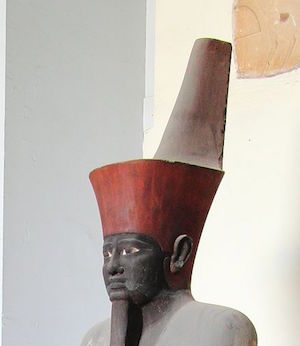
Red was seen as the opposite of white (which represented purity), but when they were paired they represented unity and completeness. The Dual Crown of Egypt was a combination of the White Crown of Upper Egypt and the Red Crown of Lower Egypt.
Red was linked with the fiery aspect of the sun and the goddess Sekhmet, “Lady of the Flame”. The amulet depicting the Eye of Ra was made with a red stone and the sun disc she wore on her head was often red.
Red could be unlucky or dangerous, too. Lector priests inscribed particularly powerful or important phrases in red, and words describing evil things and recording unlucky days were also written in red. In one case an entire papyrus about Apep (Apophis) was written in red.
Copyright J Hill 2010